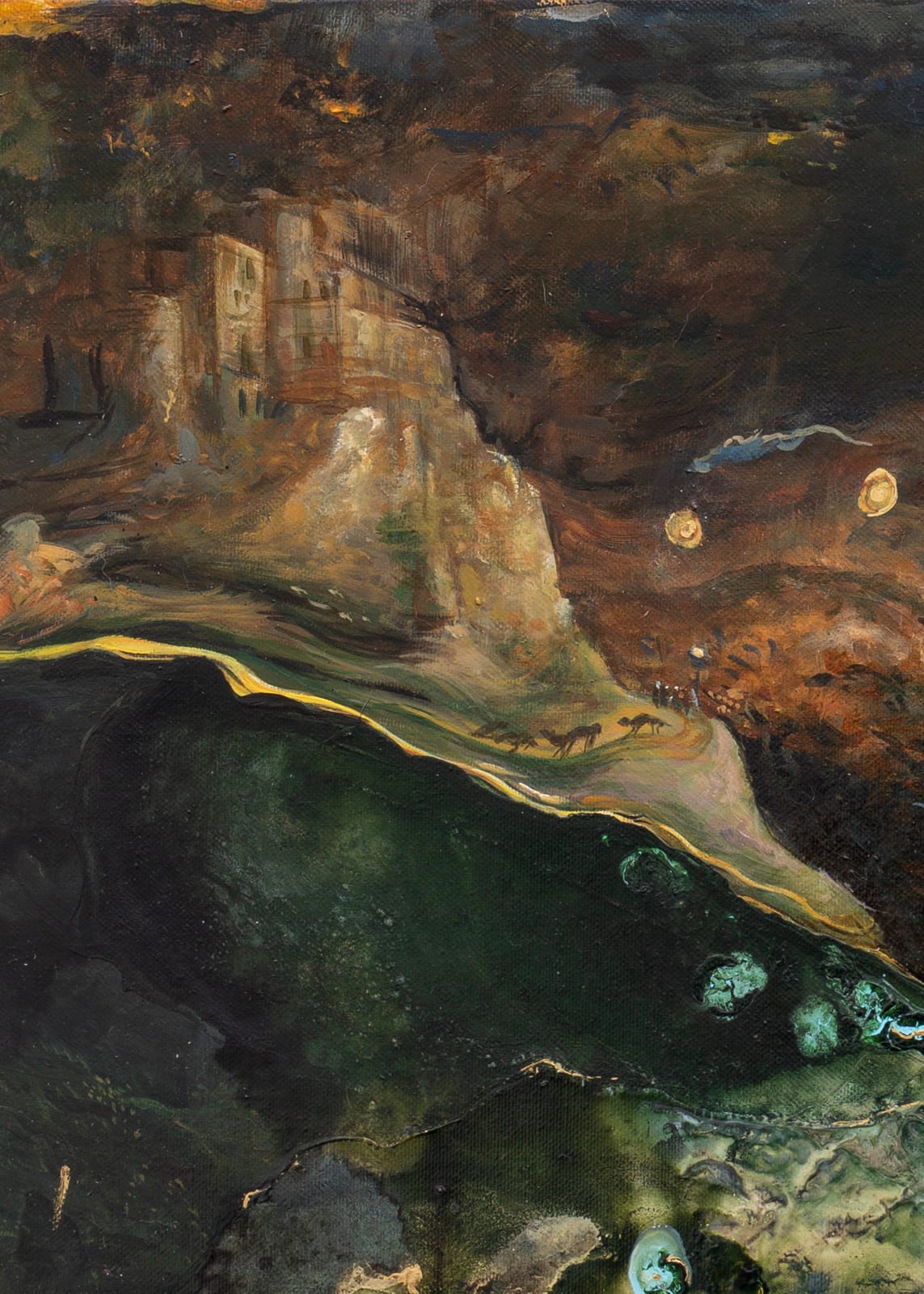








Rachel Rose
A mountainous landscape, 2022
Colour pigment, metallic powders and oil on canvas
Unframed: 48.5 x 61 x 1.4 cm | 19 1/8 x 24 x 9/16 inches
Framed: 52.1 x 64.5 x 4 cm | 20 1/2 x 25 3/8 x 1 9/16 inches
Framed: 52.1 x 64.5 x 4 cm | 20 1/2 x 25 3/8 x 1 9/16 inches
Copyright The Artist
Further images
-
(View a larger image of thumbnail 1
)

-
(View a larger image of thumbnail 2
)

-
(View a larger image of thumbnail 3
)

-
(View a larger image of thumbnail 4
)

-
(View a larger image of thumbnail 5
)

-
(View a larger image of thumbnail 6
)

-
(View a larger image of thumbnail 7
)

-
(View a larger image of thumbnail 8
)

-
(View a larger image of thumbnail 9
)

In A mountainous landscape, 2022, Rose has cropped a larger painting by Joachim Patinir to here show only the land and sky. The original painting depicts the moment when St....
In A mountainous landscape, 2022, Rose has cropped a larger painting by Joachim Patinir to here show only the land and sky. The original painting depicts the moment when St. Jerome heals a sickly lion, and from then forth, the lion stays with St. Jerome until his death. The exchange between them is an iconic instance of intense trust between human and animal. In removing St. Jerome and the lion from the image, Rose foregrounds the landscape itself.
To make this work, Rose first cropped the original and then printed it as a photograph, laying it out on board and then pouring pigments mixed to match the original hues of Patinir’s landscape. Rose then scans and digitally alters this painting photograph, and then it is painted using the same Flemish landscape techniques as the original was made. On that canvas, Rose then paints again further layers with the same poured pigment technique.
This landscape here is edited, added to, blurred, almost replicated and morphed again so that these two times of paint - a deep biblical and art historical past and our present, fit together – joining like a jigsaw.
To make this work, Rose first cropped the original and then printed it as a photograph, laying it out on board and then pouring pigments mixed to match the original hues of Patinir’s landscape. Rose then scans and digitally alters this painting photograph, and then it is painted using the same Flemish landscape techniques as the original was made. On that canvas, Rose then paints again further layers with the same poured pigment technique.
This landscape here is edited, added to, blurred, almost replicated and morphed again so that these two times of paint - a deep biblical and art historical past and our present, fit together – joining like a jigsaw.